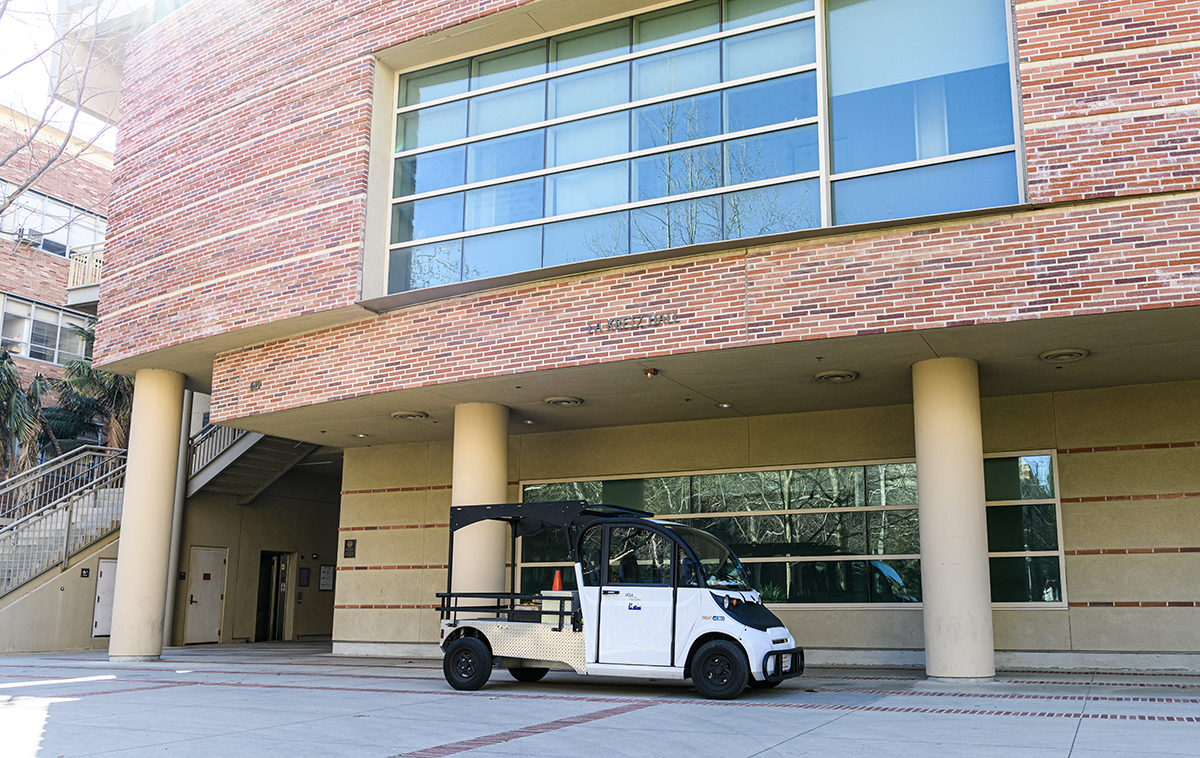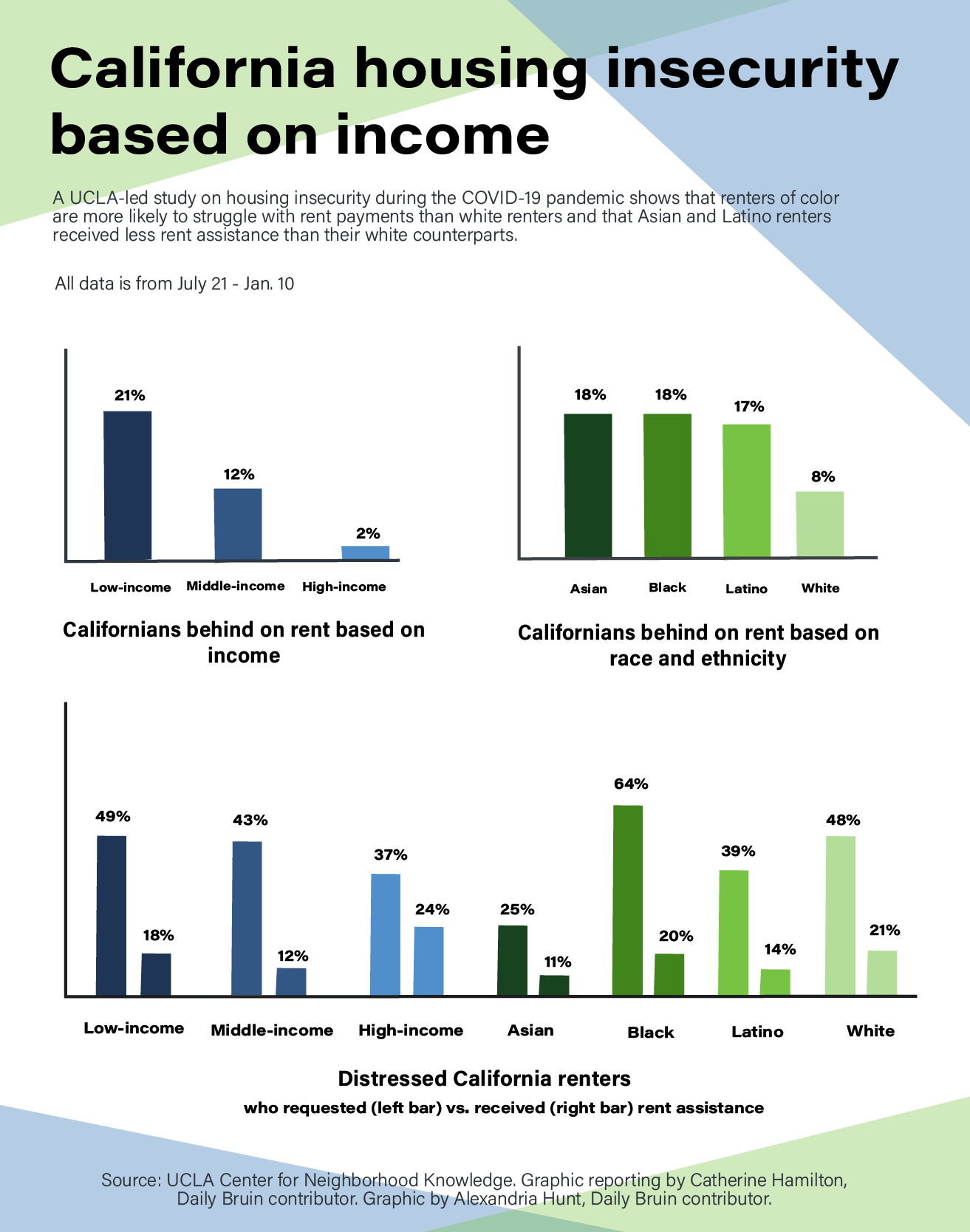Study reveals funding disparity between scientists on basis of race

La Kretz Hall is pictured. A November study from UCLA researchers showed that there are disparities in funding given by a lead grant-giving organization for scientists based on their race. (Joseph Jimenez/Assistant Photo editor)

By Anna Dai-Liu
Feb. 7, 2023 11:08 p.m.
Researchers from UCLA and other institutions found that scientists of color have been consistently and disproportionately underfunded for years by the National Science Foundation, a leading grant-making institution.
The November study found that white researchers were funded by the NSF at rates nearly 9% higher than the annual average in an overall analysis across disciplines and grant types from 1999 to 2019. Asian principal investigators were funded at a rate 21.2% below the annual average. Similar trends were observed for Native Hawaiian/Pacific Islander and Black/African American PIs, who were funded at rates 11.3% and 8.1% below average, respectively.
W. Carson Byrd, an associate research scientist at the Center for the Study of Higher and Postsecondary Education at the University of Michigan, said disparities such as these can stem from biases toward elite academic institutions during the grant review process, where marginalized communities are often less represented.
Additionally, Byrd said some reviewers also may see research on minority communities as difficult to generalize and therefore less valuable. However, this marginalizes not just researchers, but people who are actively involved in improving their communities, he added.
Christine Yifeng Chen, a co-author of the study and postdoctoral researcher at the Lawrence Livermore National Laboratory, said in an emailed statement that she was inspired to dig deeper into these disparities after hearing someone call the underfunding of Asian scientists a well-known fact.
“When I heard this, being a scientist who is Asian who does research that’s primarily supported by NSF, I thought, ‘Huh? Come again?’” Chen, a fellow at the Center for Diverse Leadership in Science at UCLA, said in the statement.
The authors also found that PIs of color received lower review scores on average than their white counterparts. Disparities in funding also varied by subject matter. For example, Black PIs had the lowest funding rates in engineering – but white researchers remained funded at higher rates across all disciplines.
Sara Kahanamoku, a co-author of the study, said they were surprised when they saw these results because of the commonly held perception that efforts to increase funding for nonwhite PIs have taken away funding from white investigators. Kahanamoku, a postdoctoral fellow at the Ulana ‘Ike Center of Excellence at the University of Hawai’i, said they recalled being told they had only received their NSF-supported fellowship because they were Native Hawaiian.
“That’s not the first time I’ve heard that, so it (the result) was kind of validating in a way,” they said. “White scientists are not being penalized – they’re actually being rewarded at a rate much higher than other scientists. And that narrative that they’re at a disadvantage is just not true.”
Kahanamoku also pointed to the disparities between research and nonresearch funding, which include funding for programs such as outreach and education – subjects to which nonwhite researchers are often expected to contribute more. For researchers of color, nonresearch proposals were funded at higher rates than their research proposals – but they were still funded less often than white PIs’ nonresearch proposals.
These problems will not be easy to fix because of the widespread change required, Byrd said. Kahanamoku said they believe one step would be increasing data transparency and providing more disaggregated data, since the lack of data regarding smaller minority groups – such as Native Hawaiians – limits how much analysis can be done.
However, both Kahanamoku and Chen reiterated the importance of continued research on this subject. In her statement, Chen said she hopes the study inspires other scientists to pay more attention to what happens behind the scenes in science and to help develop solutions to make science more equitable.
Ultimately, welcoming diverse scientists and research will also improve the lives of those in the communities being researched, Kahanamoku added.
“Science is something that doesn’t exist in a bubble,” they said. “I think being able to take a broad view of the different impacts of science can help us to think about … what our process of science is, and how we make it better.”



